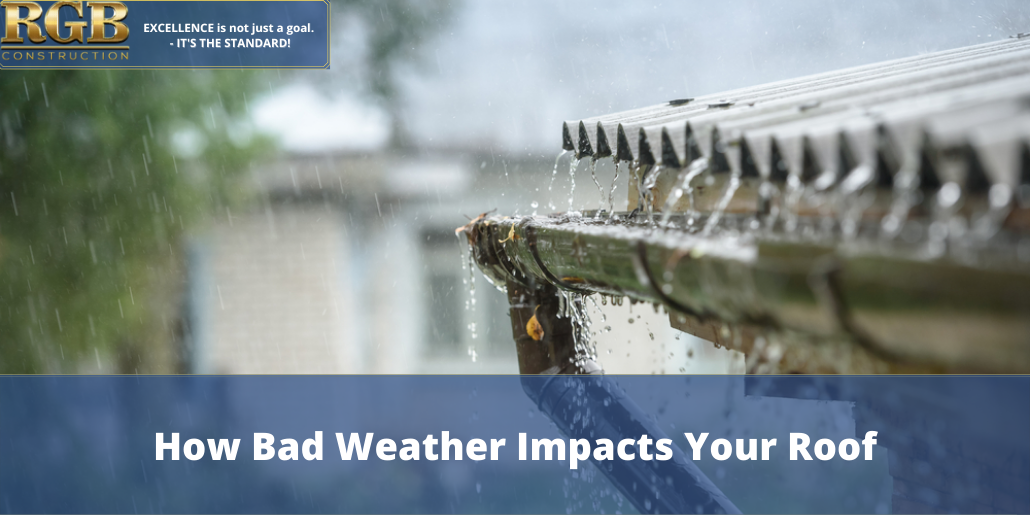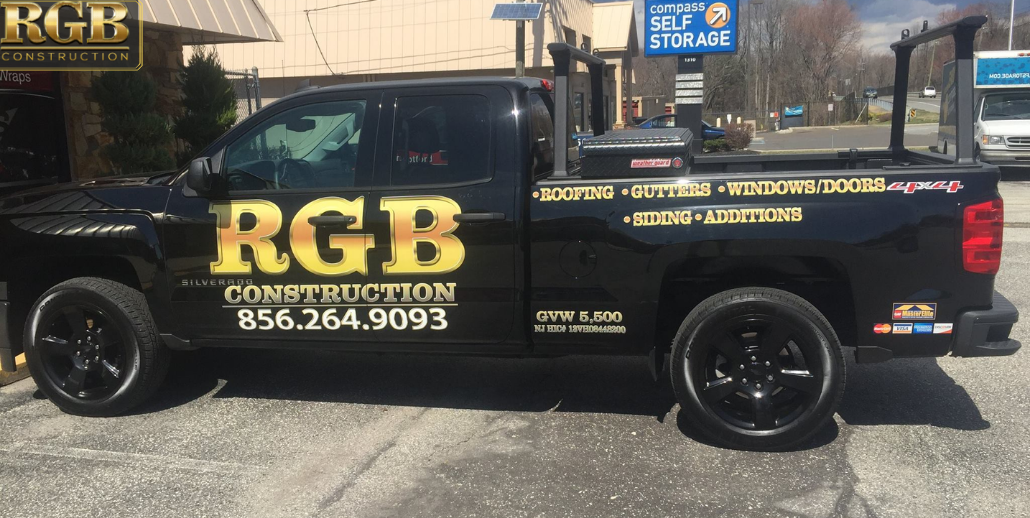Bad weather causes many things and it can certainly impact your roof. Just the sun constantly beating down on a roof is enough of a problem but there are other factors with inclement weather that compromise the integrity of your roof.
Bad Weather Eventually Affects a Roof
Severe weather can bring a double dose of damage to a roof. Whether it’s wind storms, thunderstorms, flooding, tornadoes, hurricanes, freezing temperatures, or severe heat, a roof is subject to all kinds of weather-related damage. It doesn’t matter what part of the country you live in, the weather at some point will affect a roof.
So, how does this severe weather impact your roof? Understanding the effects of weather on a roof and the damage it can bring will lead you to learn about preventative measures and maintenance skills. Knowing these aspects can help you defer expensive roof repairs down the road. Here are some issues that occur under different conditions.
Water and Rain Damage
Water damage comes in different forms. Whether it’s heavy rain from thunderstorms, hurricanes, flooding, or some other form of moisture, you’ll want home roofing contractors to look at your roof for leaks and water damage especially if you’re noticing water and any moisture on your ceiling areas. Water and mold can develop from exposure to severe storms. There will be holes in the roof and the flashing and ventilation in your attic will show the effects too. Water accumulation will expose your roof to not only water and mold but any materials that support the structure of the roof will show the effects of water damage.
Rain that falls regularly can lead to roof problems. Pooling can occur and when that happens moisture damage is the result. To remedy the problem, make sure that any accumulation is going off your roof in a flowing manner. Again, finding a roofing contractor that can inspect your roof for water-related issues is important.
Wind Impact
The wind doesn’t have to be blowing like a hurricane to cause damage to a roof. Winds that are strong enough will detach roof shingles. They may crack and bubble too. Any amount of exposure to high winds over time could cause more problems. When a roof has undergone wind damage, think seriously about an inspection through a roof replacement service. You can stop more involved issues in their tracks from presenting themselves at a later time and can save your roof from having to be replaced if severe damage occurs.
Tornado Damage
When a tornado directly strikes your home, you’re looking at a roof that has extensive damage or suffers damage beyond repair. If the damage is irreparable, you’re looking at contacting your insurance company and finding a good roof replacement service.
Snow and Ice Damage
Snow and ice can severely damage a roof, particularly when either is not taken care of almost immediately. Any snow or buildup of ice along a roof’s edge should be removed. Weight from snow and ice can damage a roof and your gutter system. Major roof repairs or replacements could be inevitable if ice buildup (ice dams) along the edge of your roof is left unchecked. When an ice dam melts, it can cause water seepage beneath the shingles which can freeze again and get into your roofing system.
Impact of the Sun
Daily exposure to the ultraviolet rays and heat of the sun can damage a roof. Even newer sun-resistant systems are not exempt from eventual damage. The sun’s rays can make shingles brittle and cause cracking. Constant heat causes expansion and contraction of roofing materials, which is damaging. Ventilation is part of the solution as is a home that is well insulated.
Humidity
Hurricanes or tropical depressions can cause humidity and heat to crack your shingles and cause the buildup of humidity in your roof. It can damage your roof to where the entire structure is subject to damage. Moisture accumulation as condensation can also cause both leaks and long-term water damage. That’s one reason to consult with a home roofing contractor about roofing materials that are waterproof.
Hail
Hail can be more damaging than rain. The way hail hits in quick and fast fashion shingles can take on damage by the wearing away of granules that cover the shingles. Hail damages metal, ceramic, stucco, asphalt, and even wooden shingles. If this occurs enough, shingles will show wear. Cracking, fracturing, and fragmentation will occur. When a shingle’s surface shows exposure, and the space beneath the shingle is open and exposed, it’s important to seek immediate remedies for a roof; otherwise, structural areas of a roof will suffer.
Shingle Issues
Thunderstorms can not only loosen shingles but lift them away altogether. If a thunderstorm doesn’t do all that, you’re likely to see lifted or curled shingles, regardless. Lightning may or may not strike your roof but when it hits a tree near your roof, the limbs can split and fall on your roof which will cause both cracks and holes. You’ll want to trim back any trees that are near or stretch over your roof.
Gutter Problems
Bad weather can influence your gutters. They not only loosen with windy weather but they can also bend and crack during weather extremes. If you don’t get proper coverage with gutters and water that may saturate the area around the foundation of your home, you’ll have pooling and puddling that can affect its structural integrity.
Hire Professionals
Hiring professionals is a necessity when terrible weather has damaged your roof. You can minimize weather-related issues with a maintenance routine and service. You should shield your roof against critical weather situations and know what to do in an emergency. When bad weather hits and your roof is damaged or requires replacement, contact the experts at RGB Construction. Call 856-264-9093. Our expertise will get you through any roofing dilemma.








